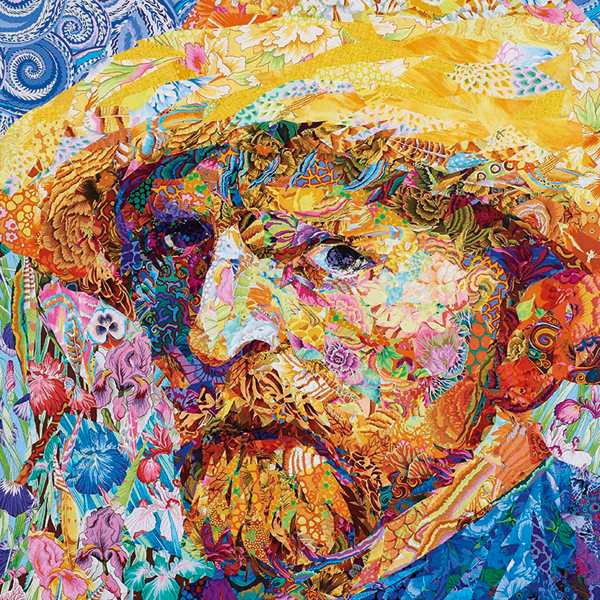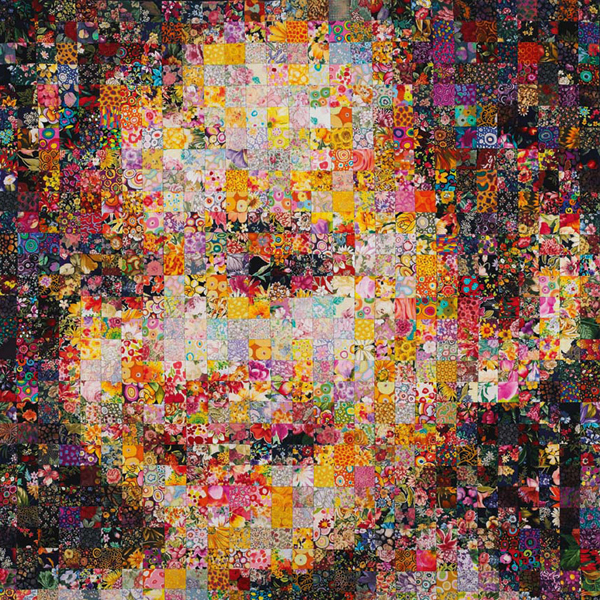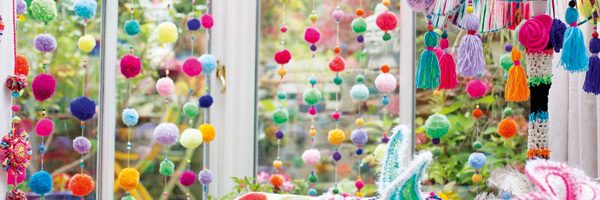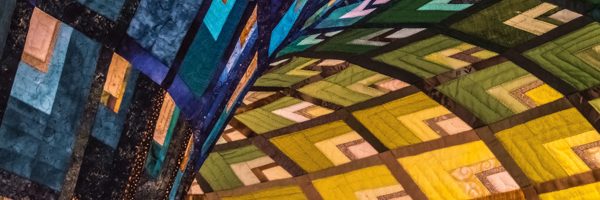
Profile: Danny Amazonas
Internationally known Taiwanese textile artist, Danny Amazonas, began his artistic life as a painter. He had tried his hand at many things including sculpture, floristry and jewellery making, before discovering the joys of working in fabric.
Once he moved to fabric as his medium, his work consisted mainly of mosaic patterns with small pieces. In 2012, he developed a new technique unprecedented in the field of fibre art, Freehand Patchwork. With this technique, Danny uses thousands of fabrics to create movement and depth in his art quilts. The results could not be achieved in painting. Using just a rotary cutter and layers of overlapping fused fabric with raw edges and invisible stitching is a long way from traditional quiltmaking.
Danny produces between four and six mid-size artworks per year, as well as creating commissioned pieces for sale. His technique requires a large stash; he has purchased most of his fabric overseas, some of the Kaffe Fassett collection coming from an exclusive distributor. Danny prepares his fabric by starching them and fusing them to fusible webbing to prevent fraying. He then rolls them to keep each one visible in boxes for easy reach.
You used paint mediums originally, but you changed to fabric to create your artwork. When was that and why?
I was a mediocre painter and knew I couldn’t make a good living out of it. I often visited art museums and art galleries, and was fascinated with the art of mosaics. Then I was inspired by Chuck Close, a photorealistic painter. Instead of paint, I’ve improvised with fabrics.
What is the hardest part of your creating, and also the most joyous?
The hardest part of my work is collecting as much fabric as possible with all the colours, shades and patterns I can get my hands on. A painter can mix the whole spectrum of colours in their pallet and have the freedom to create any textures on canvas with simple brush strokes. Working with fabrics, I must stash up all those colours, prints and patterns which enable me to create textures and forms. It is like working with a puzzle or collage, where I must find pieces to fit perfectly. I can be troubled for days by one missing piece, and then experience a joyous moment when the missing piece is found.
What types of prints do you work with, and how do you obtain the shaping and shading with printed fabric?
In my earlier works I used small prints with my fabric mosaics. Since my work evolved into freehand patchwork, I prefer working with larger and more organic prints as it gives me more freedom to work as I would if I were painting.
Apart from manipulating fabric prints, how do you construct your artwork?
A light source usually shows a three-dimensional aspect of the completed work. I’m often inspired by watching images flash by on the television screen, then I quickly draw a simple sketch and figure out how it could be portrayed with fabrics in my stash. I let the fabric dictate the final outcome of the artwork.
Do you have a favourite subject matter?
I like to work with photos of flowers and animals that I have taken over the years. My favourite subjects are portraits, depictions of eyes and close-up images so the fabric patterns are visible.
Do you like to work in large format? If so, why?
Large format with close-up images is always the ideal subject for me. Cutting fabric into small pieces won’t show the beauty of textile design and solid colour fabric shows no texture. That’s why I rarely use it.





